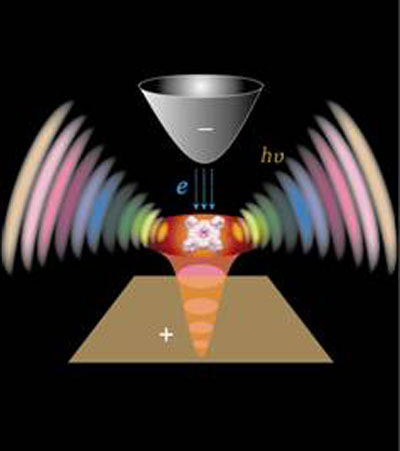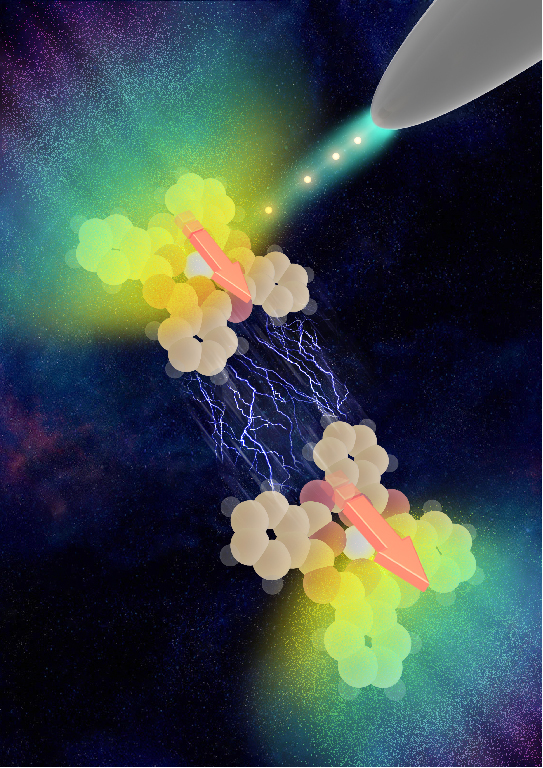Brief Introduction on the Research of Single-Molecule Optoelectronics Group (SMOG):
Our research interest is in the field of single-molecule optoelectronics and nanoplasmonics, particularly on scanning tunneling microscope (STM) based single-molecule electroluminescence/photluminescence and single-molecule Raman scattering as well as nanoscale energy transfer at the individual molecule level. The aim of our research is to provide fundamental understanding on the optoelectronic behavior of single molecules in a nanoscopic environment and related underlying physics that governs the exciton generation, light emission and scattering, and energy transfer at the nanoscale, with motivations to explore scientific basis for future technologies related to information, energy and bio-science. Focusing on these frontiers of single-molecule physics and chemistry, our group has been making persistent efforts to develop advanced optoelectronic measurement systems, particularly by combining atomically resolved STM with ultrasensitive optical detection techniques. On the other hand, through these instrumental developments, we explore the quantum control of single-molecule photonic states in the following three directions:

1. Single-molecule electroluminescence and photoluminescence: including electrically driven single-molecule light sources, "single-molecule" superradiance, single-molecule plasmonic lasing, and single-molecule single-photon sources. Research will also be extended to (1) the dynamic studies of single-molecule optoelectronic effects via TCSPC lifetime measurements by introducing electrical or optical pulses and HBT photon correlation measurements, (2) the quality improvement of emitted photons from a single molecule with respect to the brightness (intensity), monochromaticity (band width), polarization, and coherency, and (3) the exploration of potential applications of electrically driven nano-emitters and single-photon sources in the nano-optoelectronic integration and quantum information processing.

2. Single-molecule Raman scattering: including single-molecule nonlinear optics in single-molecule tip-enhanced Raman scattering (TERS), the application of single-molecule TERS in (1) understanding the mechanism of chemical reactions and photo-chemistry as well as catalytic processes on surfaces, and (2) nanoscale chemical mapping of bio-molecules on surfaces, particularly labeling-free real-space sequencing of DNA/RNA and protein molecules. Exploration of single-molecule Raman photons as a potential single photon source and its application in quantum information processing will also be carried out in the near future.

3. Energy transfer at the single-molecule scale: including incoherent fluorescence resonant energy transfer (FRET) and coherent electronic energy transfer between the molecular donor and acceptor, plasmon assisted FRET, the coupling of electrically driven quantum emitters with plasmonic waveguides and its potential application in nanoscale optoelectronic integration. By combining with single-molecule electroluminescence/photoluminescence and single-molecule Raman scattering techniques, research will also be extended to the study of the influence of vibronic coupling on the intramolecular optical transition and intermolecular interaction as well as the microscopic mechanism of light-harvesting structures in photosynthesis.
